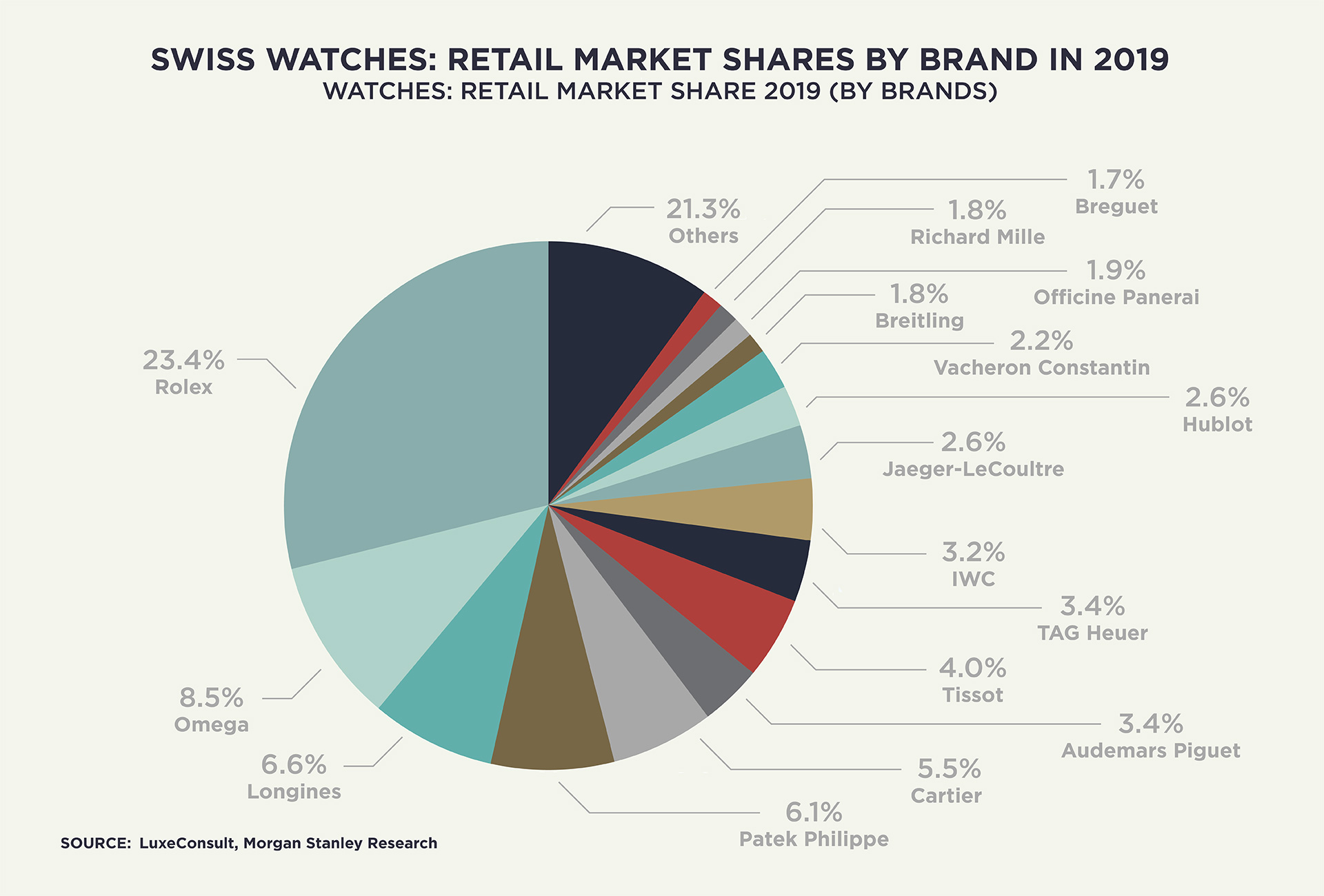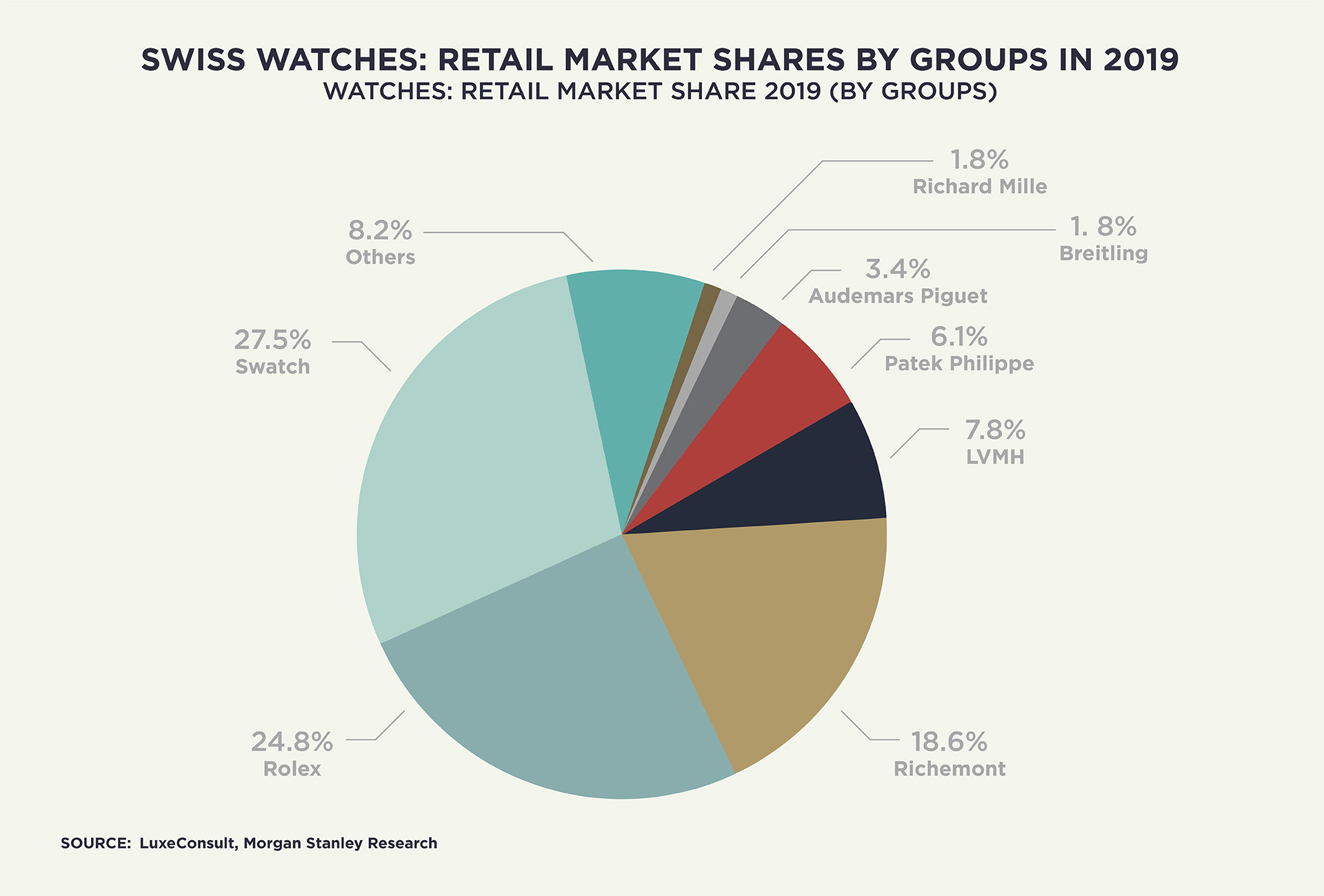Ask any poker player: nothing beats the thrill of winner-takes-all. A read through the latest analysis by Morgan Stanley and LuxeConsult suggests a similar situation within the Swiss watch industry, where the winners leave little room at the table for the rest of the players. The report, published mid-March, indicates that growth in the sector in 2019 was down to the seven brands that have turnover in excess of CHF 1 billion. These are, from highest to lowest turnover, Rolex, Omega, Cartier Watches, Longines, Patek Philippe, Audemars Piguet and Tissot. The 350 or so other brands have had to make do with the crumbs.
Switzerland continues to dominate, making up 53% of the global watch market in value compared with a tiny 2% of volume.
As a reminder, Swiss watch exports – the only industry barometer – totalled CHF 20.5 billion in 2019, up 2.6% on the previous year. Taking into account around CHF 1 billion in reimports, for the most part inventory buy-back, offset by an estimated CHF 1 billion in sales in Switzerland or 5% of total export value, turnover for 2019 remains at CHF 20.5 billion or CHF 50.7 billion at retail value. Switzerland therefore continues to dominate, making up 53% of the global watch market in value compared with a tiny 2% of volume. This contrast is indicative of Swiss watchmaking’s added value but also represents a risk factor knowing that production has been declining in volume terms for over a decade, having again contracted by 13% in 2019.
Brand first, product second
As Morgan Stanley reports, the seven “billionaire brands” took the lion’s share of growth in 2019. They captured a market share of approximately 57% in value terms compared with 27% of total production for the branch. Extrapolating current trends, the US investment bank sees Richard Mille as a strong contender to join this exclusive club. In 2019 the privately owned brand posted sales estimated at CHF 900 million, all through its own Retail network. “For a number of years now, we’ve seen how the industry has become increasingly polarised with top-selling brands on the one hand and, on the other, micro-niche brands such as MB&F and Kari Voutilainen selling authentically handcrafted products backed by a sincere message,” comments Oliver Müller, founder of LuxeConsult. “Between the two and at every price point, the situation becomes more complex, especially for those competing in the same segments as the big-name brands. In China and in the US, the two main markets for Swiss watches, the majority of consumers are still attracted to the brand, and the status that comes with it, before the product.”
In its report, Morgan Stanley makes the distinction between private players and listed groups. On this basis, it estimates that the top four privately owned brands – Rolex, Patek Philippe, Audemars Piguet and Richard Mille – had combined sales of around CHF 9 billion in 2019 and a combined market share in the region of 35%. Still on the bank’s estimates, they captured some 55% of the industry profit pool with an aggregate operating margin of about 30%. In comparison, the four listed groups of Swatch, Richemont, LVMH and Kering had combined sales of some CHF 16 billion and captured about 43% of the industry profit pool with an aggregate operating margin of around 13%. “This difference is partly due to structure,” says Oliver Müller. “An independent brand will put all its strategy, all its efforts, into sales. Also, these brands have a flexibility and responsiveness that favours margins. The larger groups that own multiple brands have a more centralised structure and a heavier administrative component. Their advantage lies with their critical mass, the ability to diversify, and the support they can give underperforming brands. All of which ‘costs’ a couple of percentage points in terms of profitability.”













